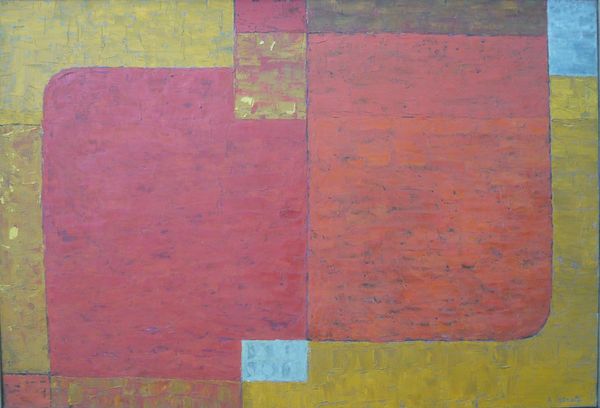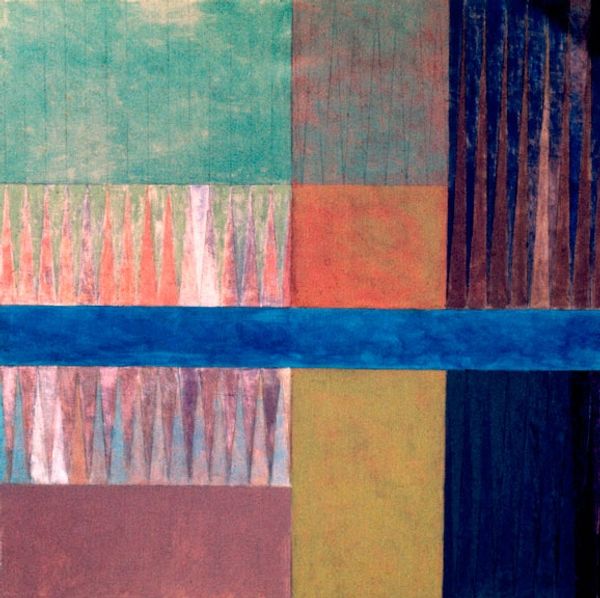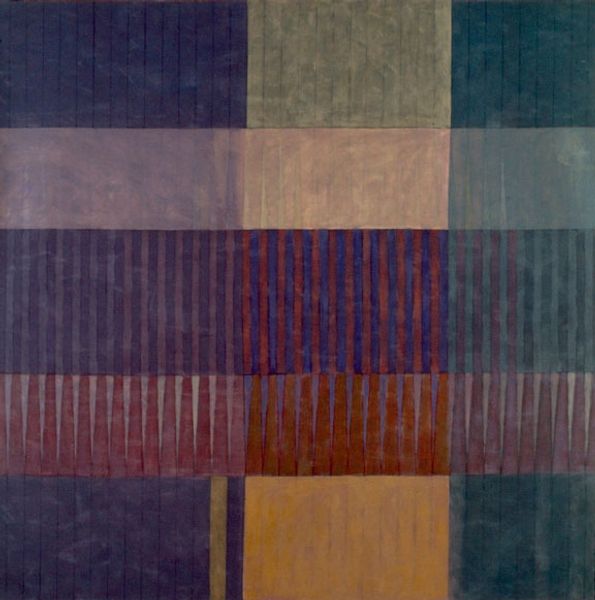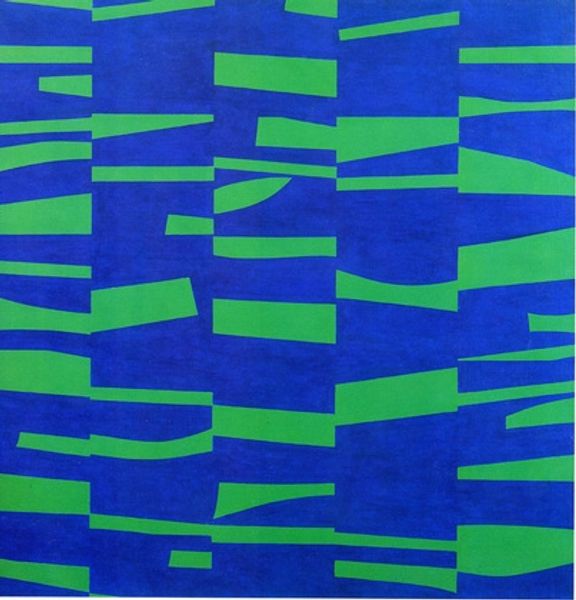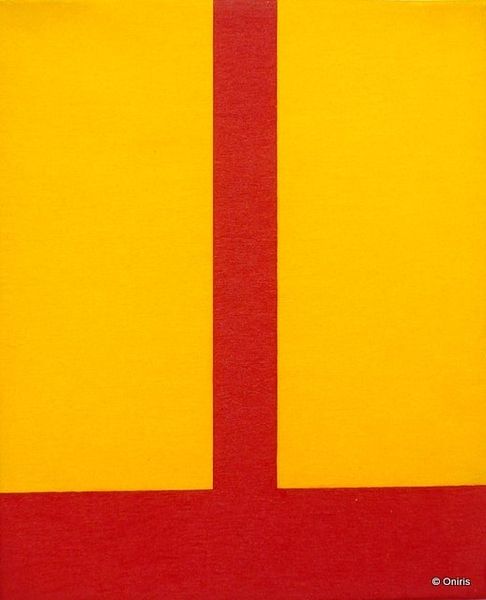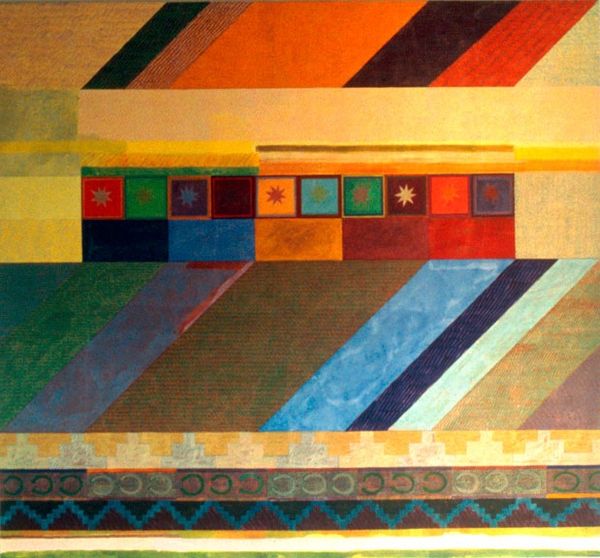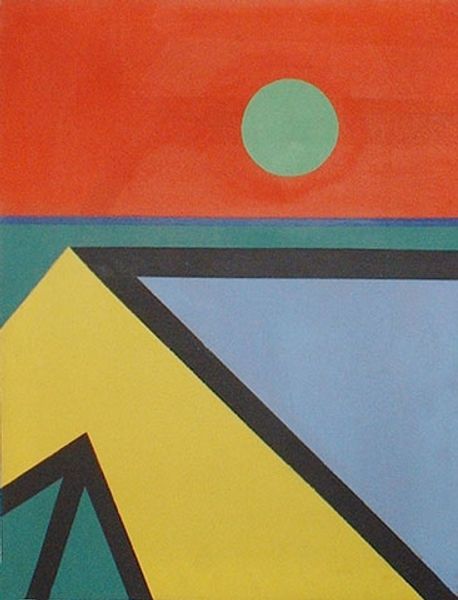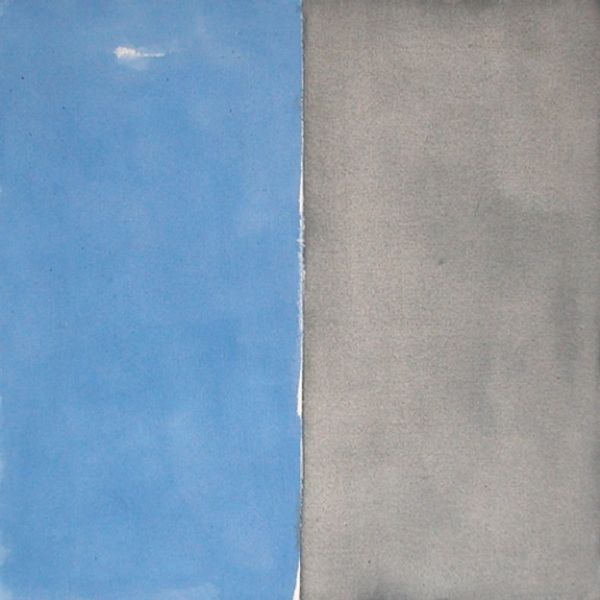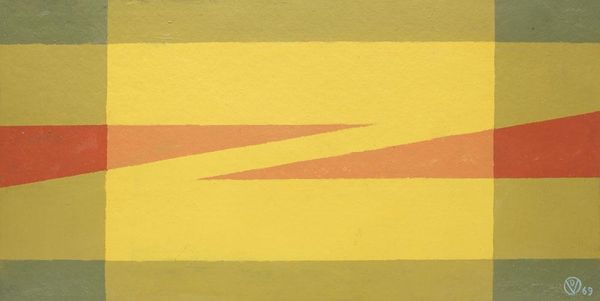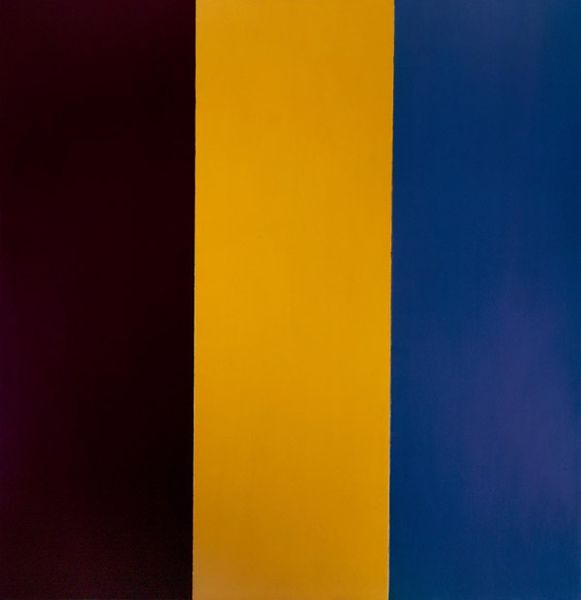
acrylic-paint
#
abstract-expressionism
#
abstract expressionism
#
acrylic
#
abstract painting
#
colour-field-painting
#
acrylic-paint
#
neo expressionist
#
acrylic on canvas
#
geometric-abstraction
#
abstraction
#
line
#
abstract art
#
modernism
Copyright: Dan Christensen,Fair Use
Editor: Here we have Dan Christensen's "Yellow Bumper," painted in 1970 with acrylic. The stripes create a striking, if simple, composition, especially against that mossy green column down the middle. It’s almost like looking at an abstracted landscape. What strikes you most about this piece? Curator: What intrigues me is Christensen’s choice of acrylic. Think about its post-war development, moving out of industrial applications and into the hands of artists. It’s inherently linked to mass production, consumer culture, and a new wave of accessibility in art making. Editor: So, the accessibility of acrylic as a material really changed things? Curator: Absolutely. It challenges the traditional notion of the artist as a solitary genius, slaving over oils with rare pigments. Acrylic democratized the art-making process, allowing for faster drying times, bolder colours, and ultimately, a quicker turnover. Editor: The stripes themselves are fascinating. Are they a reflection of something beyond just pure colour? Curator: They bring the means of production right into focus. Consider the tape used to create these lines, the deliberate marks of the process, almost flaunting its own making. This isn't about illusionism; it's about the raw physicality of the paint and the gestures involved. How do you think that contrasts with art production before, say, the 1950s? Editor: I never thought about it that way. Before, you had the hand of the artist deliberately concealed; the labour almost erased. Here, it feels like Christensen wants you to see every step, every layer. Curator: Precisely. By emphasizing process and materiality, "Yellow Bumper" prompts us to consider the social and economic conditions that shaped its creation. It reframes our understanding of artistic value, moving away from Romantic notions of artistic genius and towards an appreciation of the materials, tools, and labour that give shape to our visual world. Editor: So, looking closely at the materiality opens a window into understanding how the social implications play a bigger role. Thanks for sharing this; it's changed my whole view on color-field painting!
Comments
No comments
Be the first to comment and join the conversation on the ultimate creative platform.
